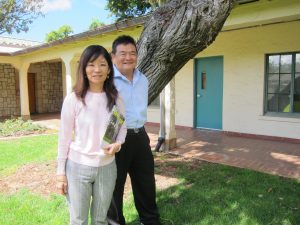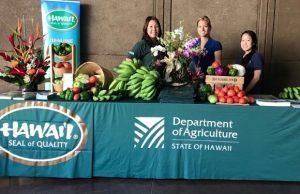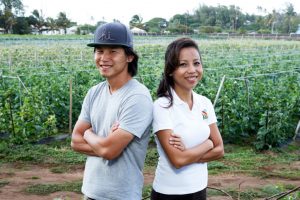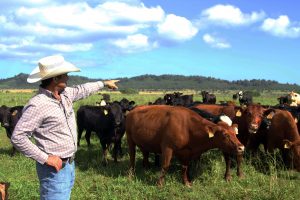Growing, buying local matters for sustainability
Posted on Apr 25, 2019 in Capitol Connection, Featured, MainHow do you get people talking about increasing food production in Hawai‘i? One way, Governor Ige found, was to set an ambitious — even controversial — goal and a projected timeline to meet it. “By saying we wanted to double local food production by 2020, the governor put a target out there and drew attention to the issue,” said new director Phyllis Shimabukuro-Geiser at the Hawai‘i Department of Agriculture (HDOA).
The result has been more awareness of the islands’ food vulnerability (we import around 85 percent of what we consume) and the need to help local farmers grow more of what we eat. The latest U.S. Department of Agriculture census released last month brought encouraging news. It showed a 5 percent increase since 2012 in the total number of farms in Hawai‘i — from 7,000 in 2012 to 7,328 in 2017 — especially among small farms between one to nine acres. “The increase in new farmers is heartening,” said Shimabukuro-Geiser. “We want consumers to continue to buy local because it really does have an impact on our community.”
The challenges for local food production are many: balancing land and water issues, supporting farmers — from young start-ups to mid-size family operations, promoting investments by larger companies, encouraging environmental “best practices,” and helping farmers meet rigorous federal food safety requirements. But Shimabukuro-Geiser and Glenn Muranaka, new HDOA deputy director and former president of Meadow Gold Dairies, are optimistic about the future.
“We have a lot of state departments working together to move ag forward — in workforce development, education and connections with farmers,” said Shimabukuro-Geiser. Muranaka added, “As the governor has pointed out, we’re entering an exciting, new age of innovation in ag. It’s not only doubling food production. We want to get young people to embrace ag, help teachers include ag in the curriculum, and provide links to promising careers to develop a new generation of growers.”
The leadership at the state’s agriculture department is working on several fronts, with the help of the Legislature, to move diversified ag into the 21st century and decrease the islands’ dependence on imported food. These include:
• Developing projects such as the proposed Whitmore Food Hub, advanced by Sen. Donovan Dela Cruz and the Agribusiness Development Corp., to help local farmers share the cost of several stages of ag production. The site on 34 acres in Whitmore Village near Wahiawa would include a production and processing facility, a research greenhouse, a farmers’ market, and warehouse.
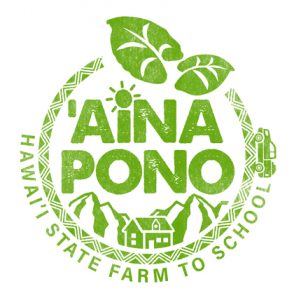
• Preserving thousands of acres of prime agricultural land for food production and coordinating water-related policies.
• Encouraging more public-private partnerships to support dairy, egg and livestock production and aquaculture as well as employ new “protected agriculture,” greenhouse technology and sustainable practices.
• Continuing to nurture a new generation of farmers in the islands through traditional as well as high-tech approaches.
Other projects to increase local food production are the solar-powered egg farm, Villa Rose, in Wahiawa and a pilot project by Costco in Waialua to use high-tech greenhouses to complement crops from local farmers and replace some of the imported produce in the islands’ Costco stores. Local companies such as Kaua‘i-based Kunoa are carving out their own niche. Kunoa is supplying beef to all Kaua‘i public schools through ‘Aina Pono and now supplies half of all beef served in O‘ahu DOE schools.
Muranaka said local initiatives such as ‘Aina Pono are important on several levels. “It’s good for the students, our farmers and the community,” he said, emphasizing the importance of brand loyalty for Hawai‘i. “We have products like Kona coffee or Maui onions or aloha shirts. I think the majority of residents would buy something grown in Hawai‘i and marketed as the best quality, as long as the price is right. That’s a win-win for everyone in the state.”
